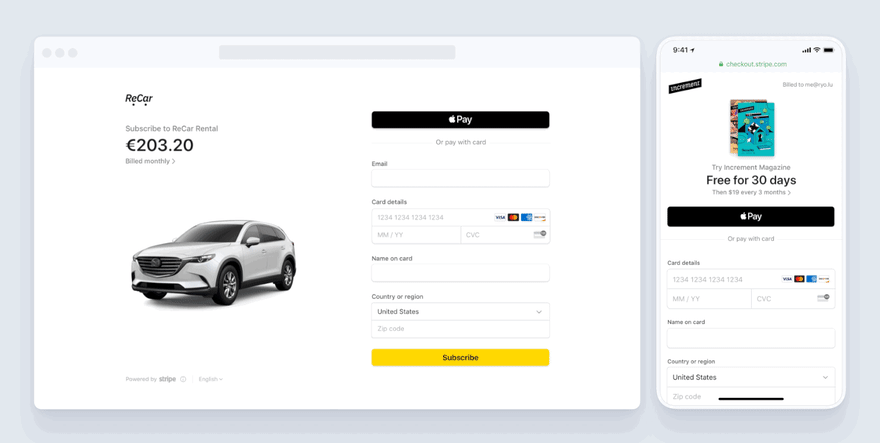Stripe Goes No-Code — Stripe Payment Links Explained
It’s official: With the new Payment Links feature, Stripe has entered the No Code market.
Why It’s a Big Deal
You can think of the process of getting money from your customers to yourself in 3 stages:
- Running a Server for backend logic and secrets
- Building a Frontend UI for customers to enter in their payment details and complete their purchase
- Creating a
PaymentIntentto track a single customer session from end to end. These must be created uniquely for each transaction.
Each of these stages are immensely technical. Stripe’s recent product releases have progressively eliminated each one of these stages, opening Stripe up to the 99.6% of humanity that doesn’t code!
Towards Stripe Checkout
Stripe’s roots are famously developer centric. The default approach was to only offer a serverside SDK, and let you wire everything else up yourself.
This gives you maximum control, but it can mean a lot of code to write and maintain. You not only have to code up an attractive, reassuring UI for people to enter their credit card details (though Stripe Elements makes that easier), you also have to continually run a server just to take even a small one-off payment. If your server goes down , or you screw up some JavaScript, there goes your money!
So along comes Stripe Checkout, where Stripe hosts your UI:

Wonderful! You not only don’t have to code the UI or host it, Stripe is continually improving the checkout page on your behalf. It is even hosting it on their domain, and most people will trust a Stripe domain over your own when entering in their credit card details.
But.
Look upon the Stripe Checkout docs and realize that the PaymentIntent section is not handled at all - you STILL have to write some code and run at least a serverless function to get this thing working!
I know this all too well because I spent a day learning and debugging this when I was launching my self published book.
Stripe Payment Links
Since everyone was writing little serverless functions to coordinate all the PaymentIntent creation and offer a nice URL for all this, the natural next step is for Stripe to do it for you instead!
You can think of Stripe Payment Links as a thin layer atop of Stripe Checkout:

Now the interface between your user and your business is just a simple URL - the web’s firstborn API.
Getting started with it could not be easier.
Assuming you have some products and prices already set up in Stripe, head to your Stripe Dashboard and look for “Payment links” under the Products section. Here is a direct link.
From here you can create a New link for each product, in seconds.

The final Payment link will just look like this: https://buy.stripe.com/4gwcQB0I9dVpeIw5km (yes, that’s a real Payment link URL!). You can now use it inside of low and no code setups like HTML, Wordpress, or WebFlow.
But perhaps the biggest 🤯 of all is that you don’t even need a website to take the money over the Internet anymore. You can now drop that link over a Discord or Slack app, or even place it as your “link in bio”.
That’s the beauty of the URL - it’s accepted everywhere. As all the best payment solutions should be.
Comparisons
Now that Stripe is handling all three stages of the ecommerce process for the first time, it is inevitable to start comparing it to other vendors that have done the same since forever. Before Stripe, you could easily have spun up a Shopify or Gumroad site and taken payments that way. Is Stripe now going for their lunch?
I don’t have any inside info on this, but my intuition is: No. People hire Gumroad and Shopify to do very different jobs.
For example, Gumroad:
- acts as a Merchant of Record (to drastically simplify tax collection and compliance)
- provides social proof (in the form of customer reviews)
- platform traffic and revenue via its Discover marketplace
- fulfilment (aka if you are selling digital content, it hosts your files for your customers to download)
In exchange for all that, it takes 6.5% of your sales. Stripe Payment Links are available for no extra charge on Stripe’s standard integrated pricing.